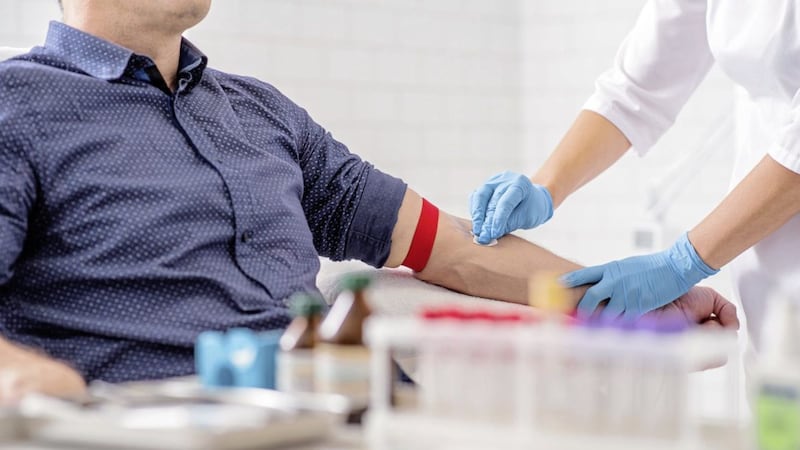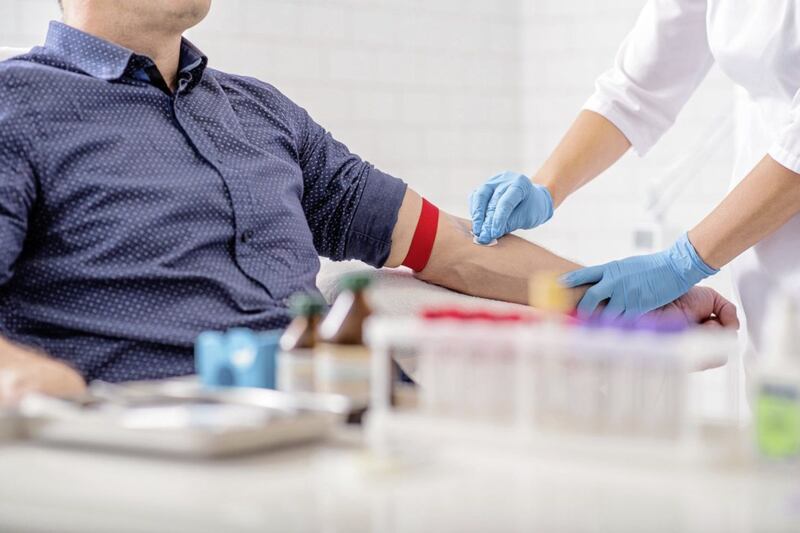THERE are a lot of myths surrounding giving blood, and you might not be 100 per cent certain you're eligible, or how the process works. Here are some FAQs answered:
How often can I give blood?
Once you've made your first donation, you might be keen to repeat the experience.
Unfortunately, you won't be able to give blood again straight away. Men can give blood every 12 weeks, women every 16.
Can I give blood if I've travelled recently?
It depends on where you've travelled. Enter your destination into the my.blood.co.uk website to learn whether you can give blood or how long you'll have to wait before doing so.
How long is the needle in for?
The whole process will take five to 10 minutes. You will sit with the needle in your arm until you've given 470ml, which is just under a pint.
Where can I give blood?
Contrary to what you might think, doctor surgeries and blood drive vans are not the only places you can do your good deed. Check the Northern Ireland Blood Transfusion Service website (nibts.org) for your nearest location.
How much do I have to weigh?
You have to weigh more than 7 stone 12 lbs or 50kg to be able to give blood. For female donors aged 17-20, there's a height and weight chart you can find online, to see whether you're able to donate before you turn 20.
Can I drink alcohol afterwards?
This isn't advised because it's unknown how your body will react to giving blood. In fact, drinking alcohol the same day can cause adverse reactions, such as fainting or dizziness.
Can I exercise afterwards?
It's best to be cautious before rushing to the gym. Not only would your performance be affected, there's an increased risk of bleeding from the venepuncture (where they take the blood from) or fainting. NHS Blood and Transplant advises: "Wait until the following day or ensure you keep any exercise to a moderate level to help to avoid any such problems."
Can you give blood if you've got tattoos?
You should not donate if you have had a tattoo, ear or body piercing, or permanent and semi-permanent make-up within the last 12 months, according to the NITBS. If you have had acupuncture performed by NHS staff or outside the NHS by a qualified health care professional, you can donate. If neither of these apply, you should not donate for 12 months after completing treatment.
What's the deal with gay men giving blood?
In June last year the Northern Ireland minister for health announced her decision to end the lifetime deferral on blood donation by men who have had sex with men, and to move to a 12-month blood deferral policy. The NIBTS implemented this change in September 2016. From that date, men who last had sexual contact with another man more than 12 months previously are able to give blood in Northern Ireland if they meet the other blood donor selection criteria. As of last month, the British government changed the rules applying to England and Wales, reducing this period to three months. This change will come into effect there in early 2018.
What is the difference between blood and platelet donations?
Blood contains red cells, plasma, white cells and platelets. When you donate, these components are separated and can be used to help up to three people. However, platelet donation is different. Donors give platelets via a machine that extracts blood, removes the platelets and then returns the blood. Platelets help blood to clot and one donation can help three adults or 12 children. In contrast to giving blood, platelet donations take a lot longer – about 60-90 minutes on a machine , though donors can give more regularly; every two weeks. While the universal blood type is O negative, the universal platelet type – which can help patients of any blood type – is A negative.




